Korean Air Lines Flight 007
description: 1983 shoot-down of a civilian airliner over the then–Soviet Union
29 results
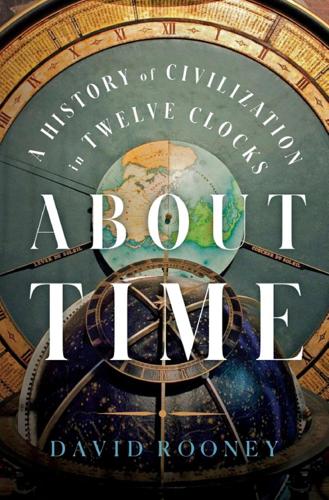
About Time: A History of Civilization in Twelve Clocks
by
David Rooney
Published 16 Aug 2021
James’s Church and clock tower from Brno’s central square, photographed in the early twentieth century 143 Assistant at the Greenwich observatory time-signal control desk, c. 1897 147 Officials investigating bomb damage at the Edinburgh observatory, 1913 160 Government sketch showing the scene of the Greenwich observatory explosion, 1894 170 Greenwich observatory official posing with gate clock, c. 1925 172 Crawford Market and clock tower, Bombay, in an early-twentieth-century postcard 175 Ethel Cain, photographed after winning the “Golden Voice” competition final, 1935 180 Family photograph of Mary Dixon (right) with her older sisters, Anne (middle) and Margaret (left), outside their home in Jarrow, 1930s 181 Watchmaker Daniela Toms adjusting a Charles Frodsham and Co. wristwatch, 2020 188 Efratom miniature atomic clock, backup for the two clocks installed on the NTS-1 satellite, made c. 1972 198 Thwaites and Reed rolling-ball clock, made c. 1972 202 Doomsday Clock, photographed on January 23, 2020, after having been adjusted to 100 seconds to midnight 204 Plutonium timekeeper buried at Osaka, 1970 215 About Time Introduction Korean Air Lines Flight 007, 1983 It is the early hours of a crisp Alaskan morning. Korean Air Lines’ Captain Chun Byung-in, First Officer Son Dong-hui and Flight Engineer Kim Eui-dong stride purposefully across the tarmac of Anchorage International Airport and climb into the cockpit of the Boeing 747 airliner that they are rostered to fly to Seoul’s Gimpo International Airport. Flight KAL 007 has stopped off at Anchorage on its journey from New York’s John F. Kennedy International Airport for servicing, refueling and a changeover of the flight and cabin crew.
…
About Time A History of Civilization in Twelve Clocks DAVID ROONEY Contents List of Illustrations Introduction Korean Air Lines Flight 007, 1983 1. Order Sundial at the Forum, Rome, 263 BCE 2. Faith Castle Clock, Diyār Bakr, 1206 3. Virtue The Hourglass of Temperance, Siena, 1338 4. Markets Stock Exchange Clock, Amsterdam, 1611 5. Knowledge Samrat Yantra, Jaipur, 1732–35 6. Empires Observatory Time Ball, Cape Town, 1833 7. Manufacture Gog and Magog, London, 1865 8. Morality Electric Time System, Brno, 1903–6 9. Resistance Telescope Driving-Clock, Edinburgh, 1913 10.
…
In 1962, the observatory’s telescopes were being used by the US Air Force to track Soviet radar signals emanating from a host of strategic military sites, including the nuclear test range on the Kamchatka Peninsula, to the northeast of Korea and Japan, which twenty-one years later witnessed the destruction of Korean Air Lines flight 007 and the loss of all its passengers and crew. The Soviet Union itself also made use of Jodrell Bank’s radar tracking capabilities, from its 1959 lunar probes Luna 2 and Luna 3 through to its Venus and Mars probes in the 1960s and its robotic Moon landers into the 1970s. It would be easy to see Cheshire’s famous postwar observatory as a site for pure scientific research, but, of course, this is a fiction.
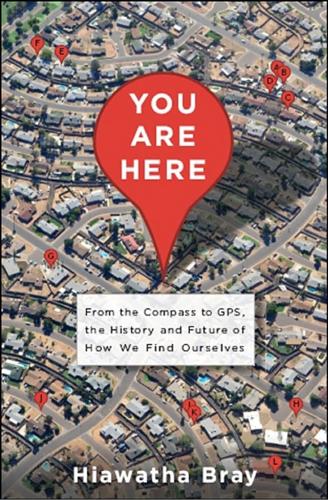
You Are Here: From the Compass to GPS, the History and Future of How We Find Ourselves
by
Hiawatha Bray
Published 31 Mar 2014
So were GPS engineer Tom Logsdon, Boston patent attorney and GPS innovator Robert Tendler, and Stephen Poizner, whose SnapTrack technology helped turn billions of phones into personal navigators. Stéphane Dubois, chief of communications at the International Civil Aviation Organization, provided essential documents about the navigational blunders that led to the tragic 1983 shootdown of Korean Air Lines Flight 007. Ted Morgan, co-founder of Skyhook, helped me understand how Wi-Fi routers became homing beacons, while former Apple Inc. executive Robert Borchers provided crucial information on Apple’s decision to embrace Skyhook’s remarkable innovation. Steve Coast, the founder of the OpenStreetMap project; Joshua Stanton of the One Free Korea blog; Curtis Melvin, editor of North Korean Economy Watch; and Erik Hersman, the co-founder of Ushahidi, taught me much about do-it-yourself cartography.
…
US, 214–215 Kelly Act, 33–34 Kelsy, Ben, 61 Kennedy, Anthony, 214 Kennedy, John F., 87, 161 Kenya, 182–184 Kershner, Richard, 83 Keslin, Phil, 177 Keyhole, 137, 178, 179 Keyhole Markup Language (KML), 180 Khan, Asif, 205 Khrushchev, Nikita, 157, 158 Khrushchev, Sergei, 158 Killian, James, 157 KML. See Keyhole Markup Language Kobia, David, 182 Korean Air Lines Flight 007, 105–106 Krasner, Norm, 115 Lamarr, Hedy, 124 Land, Edwin, 156 Lapita people, 3 Latitude, 4, 6, 7–8, 12, 50, 86, 87, 92, 106, 113, 119, 127, 170–171, 173, 228 Laussedat, Aimé, 147 Law, 146, 147, 160 Law enforcement, 113–114, 140, 216, 217, 226, 227 Lawrence Livermore Laboratories, 166 Leghorn, Richard, 154–156 Lewis, David, 3 Lewis, Meriwether, 17 License-plate recognition (LPR) systems, 218 Lighted airway system, 33, 34 Lindbergh, Charles, 104–105 Location Privacy Protection Act, 226–227 Lockheed Martin, 167 Loki, 133–134 Longitude, 7–8, 12, 13, 14, 86, 87, 92, 106, 113, 119, 127, 170–171, 173, 228 Logsdon, Tom, 106–107 LORAN, 96–97 Magnavox, 86 Magnetic compasses, 8–13, 20, 26, 48, 50–51, 59, 60, 61, 106 Magnetism, 8–13, 20–21 Mail system, 32–34 Mapping compasses and, 11–13 GPS and, 119 history of, 2–7 hot-spot, 130–134 radio technology and, 29–30 triangulation and, 16–17 wave, 3–4 Wi-Fi, 136, 137–144, 170 world map and, 17–18 See also Internet mapping MapQuest, 175, 176, 179, 187–188 Marconi, Guglielmo, 22–23, 24–25, 45 Marcus, Michael, 124–125 Marine Corps, US, 184 Marketing, 202–205 Markey, Edward, 216 Maskelyne, Nevil, 16 Massachusetts Institute of Technology (MIT), 40, 61, 67, 68, 69, 71, 212 Maximus Planudes, 7 Maxwell, James CLerk, 21 Mayflower, 1, 2, 18 McClure, Frank, 78, 80, 81, 82, 83 McDonnell, Stephen, 144 Meier, Patrick, 181–182, 183 Melvin, Curtis, 170 Mercator, Gerhard, 10, 11–12 Metro-Goldwyn-Mayer, 124 Microsoft, 175, 179, 187 Midway, 79 Miguelez, Andrew, 200–201 Million Map, 17–18 MIT.
…
Furious US officials accused the Soviets of cold-blooded murder; the outraged Russians insisted the plane had been on a spy mission.21 In the immediate aftermath, President Ronald Reagan announced to the world that to prevent future tragedies, the GPS technology being developed for the military would be made available for civilian use as soon as the satellite network was made operational. We will never know whether having GPS on board would have saved KAL 007. The plane’s navigational systems were superb. There was Doppler radar, capable of identifying the aircraft’s location by bouncing radio signals off the earth below. As Doppler began to be installed on planes in the early 1960s, airlines that had used full-time navigators on international flights began to abandon the practice; the pilot and first officer could find their way around the world without the extra help.
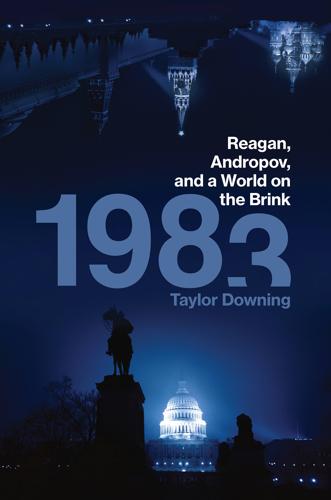
1983: Reagan, Andropov, and a World on the Brink
by
Taylor Downing
Published 23 Apr 2018
But McDonald had had a terrible journey from Atlanta to New York, had been delayed by bad weather and had missed his intended flight and was re-ticketed on to KAL 007. Exhausted, he decided to remain on board, probably sleeping through the stopover. Both flights, as per usual, were due to fly in tandem on to Seoul less than half an hour apart on the international air route known as Romeo 20 across the north-east Pacific. Both flights picked up fresh crews in Anchorage to fly the second leg. The crew of the first leg on KAL 007 had reported a VHF radio malfunction, and while engineers were fixing that the new crew arrived on the flight deck.
…
In addition there were the three KAL captains and three flight engineers also in first class. They were friends and colleagues, and Chun might have enjoyed chatting with them while being served some Korean delicacies by the first class cabin crew. This is purely surmise, but all communications with KAL 007 from its departure were with the co-pilot, Son Dong-hui, indicating that it was possible that Chun was not on the flight deck. Whoever was in command of KAL 007, the aircraft slowly drifted hundreds of miles off course. As it did so, a series of extraordinary coincidences occurred. The aircraft had some difficulty in communicating with Anchorage Air Traffic Control so instead of messaging direct it communicated through its sister aircraft KAL 015 flying behind it.
…
The whole region had been tense since the FleetEx 83 exercises in April, after which Andropov himself had ordered the Soviet defences to shoot-to-kill any intruder over Soviet territory. Inside KAL 007 the passengers of course had no sense of the danger they were flying into. Many would have been watching the in-flight movie. In those days the film was projected on to screens that had been pulled down throughout the cabin. That night a little-known American movie called Man, Woman and Child was being shown. Others would have been sleeping in anticipation of a dawn arrival in Seoul. At this point, if KAL 007 had been flying correctly down Romeo 20 it would have been passing the waypoint named NEEVA.
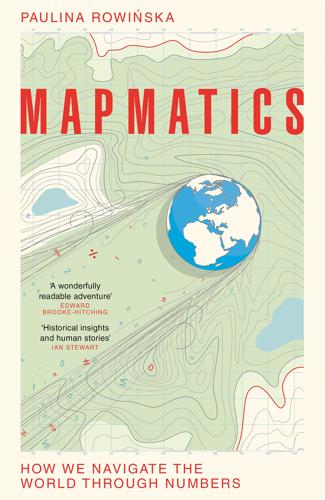
Mapmatics: How We Navigate the World Through Numbers
by
Paulina Rowinska
Published 5 Jun 2024
Similar maps were shown to Americans during the Second World War to encourage support for US participation in the conflict. This wasn’t a far-flung battle, the maps indicated, but something that was on their doorstep too. The Soviet threat wasn’t only theoretical, of course. In August 1983, at JFK airport in New York, passengers boarded Korean Air Lines Flight 007 heading towards Seoul in South Korea. After take-off, it made its way towards Anchorage, Alaska, a common refuelling stop, as we’ve seen. Following a brief break, the plane took off again, and the crew set the autopilot for the South Korean capital – or at least that’s what they thought.
…
P. ref1 Klondike gold rush, Canada ref1 knot problem ref1 Koch, Helge von ref1 Koch, John ref1 Koch, Tom ref1 Kochland ref1, ref2, ref3 Koelemeijer, Paula ref1, ref2 König, Dénes ref1 Königsberg bridges puzzle ref1, ref2, ref3, ref4, ref5, ref6, ref7, ref8, ref9, ref10 Konrad of Colmar ref1 Korean Air Lines Flight 007 ref1 Kremer, Geert de see Mercator, Gerardus Kühn, Heinrich ref1 Lambert, Johann Heinrich ref1 Lambeth Waterworks Company ref1, ref2, ref3 Lamont Geological Observatory, Columbia University, New York, USA ref1, ref2, ref3 Larcom, Shaun ref1 large low-velocity provinces (LLVPs) ref1 latitudes (parallels) ref1, ref2, ref3, ref4, ref5, ref6, ref7, ref8, ref9 Legible London ref1, ref2 Lehmann, Inge ref1, ref2 lidar ref1 light waves ref1, ref2 lines, measuring borders of Colorado ref1 circles ref1, ref2 and scale ref1, ref2 straight lines ref1 using logarithmic axes ref1 wiggly lines ref1, ref2, ref3, ref4; see also coastline paradox Literarum latinarum (Kremer) ref1 Livingstone, Ken ref1 logarithmic axes ref1 logarithms ref1, ref2 London, UK Great Stink of London (1858) ref1n Legible London ref1, ref2 London School of Hygiene and Tropical Medicine ref1 London Underground (Tube) ref1, ref2, ref3 nineteenth-century cholera outbreaks ref1, ref2, ref3 longitudes (meridians) ref1, ref2n, ref3, ref4, ref5, ref6, ref7, ref8, ref9 Lopez, Raymond ref1 lost persons/objects, finding ref1 loxodromes ref1 Lucasfilm ref1 Ma, Stephen ref1 McGhee, Eric ref1, ref2, ref3 Madison, James ref1 magnetic field, Earth’s ref1, ref2n Mandelbrojt, Szalom ref1 Mandelbrot, Benoit B. ref1, ref2, ref3, ref4, ref5, ref6 Manhattan metric ref1, ref2 mantle plumes ref1 mapmaking areas, preserving ref1, ref2 distances, preserving ref1 Gall–Peters projection ref1, ref2 impossibility of perfection ref1, ref2 Mercator projection see Mercator projection projections see projections shapes, preserving ref1, ref2 marine chronometer ref1 Markov chain Monte Carlo (MCMC) ref1 Markovich, Jeremy ref1 Mars, mapping interior of ref1 Maurepas, Jean-Frédéric Philippe Phélypeaux, Count of ref1 Meals on Wheels ref1, ref2 Measure of the Earth (Ferreiro) ref1 Mecca, direction of ref1, ref2 medical mapping COVID-19 pandemic ref1 H1N1 pandemic ref1 nineteenth-century cholera outbreaks (UK) ref1, ref2, ref3 SIR models ref1, ref2 yellow fever outbreak (1795) (USA) ref1 Menger, Karl ref1 Menger’s sponge ref1n ‘Mercator effect’ ref1, ref2n Mercator, Gerardus ref1, ref2, ref3, ref4, ref5, ref6 Mercator projection Cold War use of ref1 from a cylindrical projection ref1, ref2 distortions ref1, ref2, ref3, ref4, ref5 horizontal stretch ref1, ref2, ref3 modern-day versions ref1 popularity ref1, ref2, ref3 purpose ref1 vertical stretch ref1, ref2 and worldviews ref1, ref2 Wright’s interpretation ref1, ref2, ref3 Mercator, Rumold ref1 meridians see longitudes (meridians) metric maps ref1, ref2 metric spaces ref1, ref2 Metron company ref1, ref2 Mid-Atlantic Ridge ref1, ref2 Milwaukee school districts, Wisconsin, USA ref1, ref2 modulo ref1n Monarrez, Tomás ref1 Morison, Samuel Eliot ref1 Morris, Gouverneur ref1 Moser, May-Britt and Edvard ref1 Nadel, Lynn ref1 Napier, John ref1 NASA (National Aeronautics and Space Administration) ref1 National Association for the Advancement of Colored People (NAACP) ref1 National Geographic ref1, ref2 National Geographic Society ref1, ref2 NATO phonetic alphabet ref1, ref2 Nature ref1 Nature of Maps, The (Robinson and Petchenik) ref1 nautical miles ref1n Nautilus, EV ref1 nearest neighbour algorithm ref1, ref2 neuroscience ref1 New York City Commissioners’ Plan ref1 New Zealand 1929 earthquake ref1 Newton, Isaac ref1 Nicholson, Francis ref1 Nippon Foundation ref1 noise, computer ref1 North-centric view ref1, ref2 north, direction ref1n, ref2 North Korean missile threat ref1 North Pole ref1, ref2, ref3, ref4, ref5, ref6, ref7 Norway – UK Fisheries Case ref1 Nova et Aucta Orbis Terrae Descriptio ad Usum Navigantium Emendate Accommodata (Mercator) ref1 nuclear explosions ref1 Nunes, Pedro ref1 Ocean Exploration Trust (OET) ref1 ocean floor on-going discoveries ref1 importance of maps ref1 map resolution ref1 OET’s mapping expeditions ref1 plate tectonics and continental drift ref1, ref2 satellite mapping ref1 Seabed 2030 initiative ref1 sonar mapping ref1, ref2 soundings ref1 Tharp and Heezen’s maps ref1 volcanoes ref1 O’Keefe, John ref1, ref2 Oldham, Richard Dixon ref1 On-Road Integrated Optimization and Navigation (ORION) (UPS) ref1 On the Heavens (Aristotle) ref1 On the Measure of the Earth ( Eratosthenes) ref1 On the Mode of Communication of Cholera (Snow) ref1, ref2 ‘Orthogonal Map of the World’ (Peters) ref1 orthographic projections ref1 Osipovitch, Col.
…
: Arthur Jay Klinghoffer, The Power of Projections: How Maps Reflect Global Politics and History (Westport, CT: Praeger, 2006), 111. just off Sakhalin Island in today’s Russia: Thom Patterson, ‘KAL Flight 007: A Cold War-Fueled Tragedy’, CNN, 31 August 2013, https://edition.cnn.com/2013/08/31/us/kal-fight-007-anniversary/index.html. the Soviets’ reaction was considered unreasonable: Xinyue Wu, ‘Map of Korean Airlines Flight 007’, Mappenstance, 3 April 2018, https://blog.richmond.edu/livesofmaps/2018/04/03/map-of-korean-airlines-flight-007/. despite the tragedy of lives lost: Patricia Gilmartin, ‘The Design of Journalistic Maps: Purposes, Parameters and Prospects’, Cartographica 22, no. 4 (1985): 1–18, https://doi.org/10.3138/4n0w-35p7-w416-9341. 3.
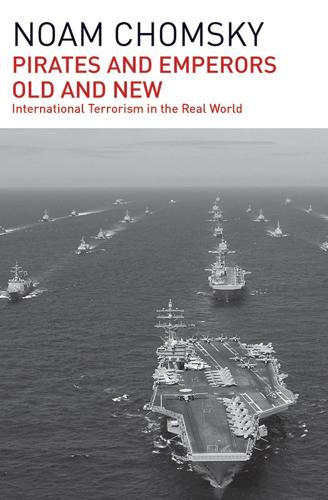
Pirates and Emperors, Old and New
by
Noam Chomsky
Published 7 Apr 2015
The official Israeli reaction was given by Prime Minister Golda Meir: “the government of Israel expresses its deep sorrow for the loss of human life and is sorry that the Libyan [sic] pilot did not respond to the warnings given him in accordance with international practice,” while Shimon Peres added that “Israel acted in accordance with international laws.” Israel falsely claimed that the pilot was not authorized to fly the jet plane. “The press was forbidden to publish pictures of the destroyed plane, of the dead and the wounded,” Amiram Cohen observes in a detailed analysis of the Israeli reaction (undertaken after the KAL 007 atrocity), and “journalists were not allowed to visit the hospital in Beersheba and to interview survivors,” all part of a “disinformation” effort. The international reaction was dismissed by the Israeli press as yet another demonstration that “the spirit of anti-Semitism flourishes” in Europe, virtually a reflex response, in the U.S. as well, when someone dares to mention or criticize an Israeli crime.
…
After numerous fabrications, Israel confirmed that there had been an “error of judgment,” agreeing to make ex gratia payments to the families of victims “in deference to humanitarian considerations” while denying any “guilt” or Israeli responsibility.103 The incident was passed over quickly in the United States, with little criticism of the perpetrators of the crime. Prime Minister Golda Meir arrived in the U.S. four days later; she was troubled by few embarrassing questions by the press and returned home with new gifts of military aircraft. The reaction was slightly different when the Russians shot down KAL 007 in September 1983,104 though it was comparable when Washington’s UNITA friends claimed to have shot down two civilian airliners at the same time. It is not difficult to discern the criteria for “international terrorism.” The record of Israeli terrorism goes back to the origins of the state—indeed, long before—including the massacre of 250 civilians and brutal expulsion of 70,000 others from Lydda and Ramie in July 1948; the massacre of hundreds of others at the undefended village of Doueimah near Hebron in October 1948 in another of the numerous “land-clearing operations” conducted while the international propaganda apparatus was proclaiming, as it still does, that the Arabs were fleeing at the call of their leaders; the murder of several hundred Palestinians by the IDF after the conquest of the Gaza strip in 1956; the slaughters in Qibya, Kafr Kassem, and a string of other assassinated villages; the expulsion of thousands of Bedouins from the demilitarized zones shortly after the 1948 war and thousands more from northeastern Sinai in the early 1970s, their villages destroyed, to open the region for Jewish settlement; and on, and on.
…
Africasia, July 1985, for details on the captured South African commandos, an episode largely ignored in the U.S. On the airliners, see Boston Globe, New York Times, Washington Post, November 11, 1983; Boston Globe, February 21, 1984. These barely noted incidents occurred in the midst of mass hysteria over the shooting down of KAL 007 by the USSR, which merited seven full pages in the densely-printed Times index in September 1983 alone. Subsequently, particularly after the 9–11 terrorist atrocities, there was a change in the image of the forces recruited, organized, and trained by the CIA and its associates to pursue their war against Russia (not to help the Afghans, which would have been legitimate).
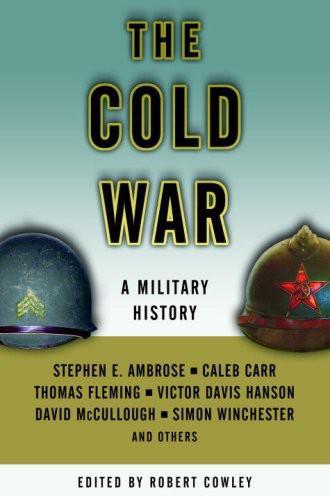
The Cold War
by
Robert Cowley
Published 5 May 1992
Gromyko met Shultz in Madrid on September 8 to discuss European issues, but the secretary of state proved determined to press the Russians on human rights and KAL 007. Following a chilly private talk, Shultz heard Gromyko tell the larger group, “Problem number one for the whole world is to avert nuclear war.” Don Oberdorfer, the distinguished diplomatic correspondent for The Washington Post, told an audience in 1993 that “Ronald Reagan was not the man I thought he was. It was a scary time from [my] perspective.” President Reagan had the Russians where he wanted them. He held the high ground in terms of propaganda and had determined to exploit the Soviet error in the KAL 007 incident. He had frightened Moscow with the Strategic Defense Initiative, had continued nuclear programs that posed dangers to Soviet nuclear forces, and had stood at the point of deploying Euromissiles that directly threatened Moscow's command-and-control centers and its political leadership.
…
Russians and Americans were both proceeding with new missile deployments, including a fresh generation of nuclear weapons in Europe that terrified local populations. Cold War covert actions initiated by one side or the other were under way in Asia, Africa, and Latin America. To end the summer with a bang, on the last day of August a Korean civilian airliner, flight KAL 007, blundered into Russian airspace, to be pitilessly shot down with 269 passengers on board. President Ronald Reagan himself declared the Soviet Union an “evil empire” and the “focus of evil in the modern world.” These events took place in the open, apparent to everyone. But behind the scenes the Cold War was even hotter; in fact, practically boiling.
…
But the Reagan administration refused to be deflected and moved steadily toward Euromissile deployment scheduled for the fall. This impending development, combined with lack of progress in arms control talks, cast a pall over the Kremlin. Throughout the summer, the Soviets made private and semipublic threats to walk out of arms negotiations. Then came KAL 007. The Soviet shootdown of the Korean airliner on September 1, egregious error that it was, proved less damaging to U.S.-Soviet relations than Moscow's initial inclination to deny everything. Kremlin confusion increased because Yuri Andropov, sick with failing kidneys, had left Moscow for a Black Sea resort, his vacation becoming a convalescence.
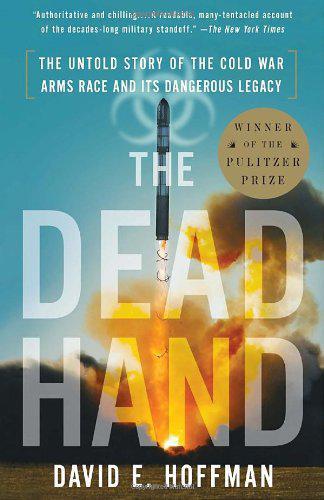
The Dead Hand: The Untold Story of the Cold War Arms Race and Its Dangerous Legacy
by
David Hoffman
Published 1 Jan 2009
The threatening Pershing II missiles were nearing deployment in Germany. The interceptor pilots on Sakhalin Island had already been burned once, and were warned not to let it happen again. Into this maelstrom of suspicions and fears flew a large, stray bird. ---------- 3 ---------- WAR SCARE When Korean Air Lines flight 007 left Anchorage at 4 A.M. local time on August 31, the crew was well familiar with the planned route across the Pacific, which came close to the airspace of the Soviet Union before crossing Japan and heading to Seoul. The pilot of the Boeing 747 was Captain Chun Byung-in, forty-five years old, a veteran of the Korean Air Force who had logged 6,619 hours flying jumbo jets, including eighty-three flights across the northern Pacific in the previous decade.
…
Instead of picking up the Inertial Navigation System, which would have steered the plane on the proper route, the autopilot was instead set at a constant magnetic heading. This may have been caused by the failure to twist a knob one further position to the right. The flight began to drift northward of Route R20. About 50 minutes into the flight, the crew of KAL 007 reported crossing Bethel, the first waypoint, at 31,000 feet. They didn't know it, but the plane was already 13.8 miles north of Bethel and outside the air route. As they crossed the ocean, Chun and his crew saw nothing amiss, according to their communications with air traffic controllers. After Bethel, at the next waypoint, they reported all was well, but they were sixty-nine miles north of their route.
…
Gorbachev's diagram, which had been published in the New York Times as an advertisement by antinuclear businessmen the previous February, might have been dismissed as a piece of agitprop, a gimmick. 7What was significant was not so much the dots and squares on the page, but the obvious enthusiasm of the man who was using it to make his point. Gorbachev was knowledgeable, unhesitating and demonstrative. In Moscow, Gorbachev at this point had participated in the high-level internal discussions of military and foreign policy issues, such as the war in Afghanistan, the deployment of the Pioneer missiles, the shooting down of KAL 007 and the strategic arms negotiations. But little was known outside the Soviet Union of his views. He had never spoken out so openly on disarmament and foreign affairs as he began to do in Britain. Throughout the visit, he called attention to the dangers of nuclear war and emphasized Soviet fears of an arms race in space.
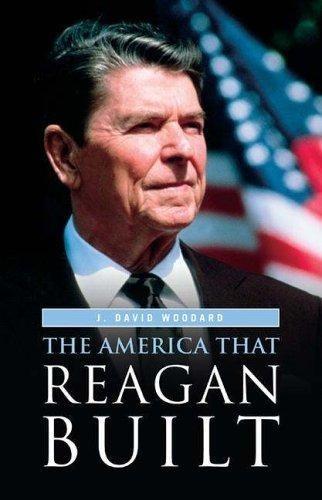
The America That Reagan Built
by
J. David Woodard
Published 15 Mar 2006
The Boeing 747 jumbo airliner lifted off carrying 244 passengers, including Congressman Lawrence McDonald, known as a virulent anticommunist and scheduled to attend the thirtieth anniversary celebrating the end of the Korean War. After refueling in Anchorage, Alaska, the flight headed to Southeast Asia. Radar operators with the Soviet Air Defense force picked up KAL 007 over Sakhalin Island and identified it as a hostile invasion of domestic airspace. They instituted a state of emergency that included scrambling jet interceptors, with instructions to make visual contact with the intruder aircraft. A few moments later, the pilot of the Sukhoi-15 (SU-15) fighter informed ground control that he could see the airliner and fired warning bursts from his cannons to slow the plane down.
…
In the end they would ratify the Intermediate Nuclear Forces (INF) Treaty, which banned all intermediate nuclear missiles, and conclude the outline of the Strategic Arms Reduction Treaty (START) that dramatically reduced long-range nuclear forces. In short, they would change the world and bring about the ultimate end of the Cold War. Before 1985, U.S.-Soviet relations were at an all-time low. The downing of KAL-007 and the deployment of missiles in Europe resulted in the Soviet Union walking out of arms control talks. From the beginning, the Soviet premier had two problems: the first was the need for military disarmament, and the second was the Afghanistan invasion. Gorbachev needed disarmament to revive the Russian economy and an honorable way to get out of the war.
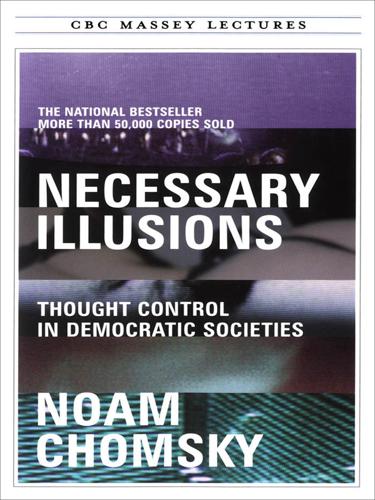
Necessary Illusions
by
Noam Chomsky
Published 1 Sep 1995
To take a recent case, after the U.S. warship Vincennes shot down an Iranian civilian airliner over Iranian territorial waters, the Boston Globe ran a column by political scientist Jerry Hough of Duke University and the Brookings Institute in which he explained: If the disaster in the downing of the Iranian airliner leads this country to move away from its obsession with symbolic nuclear-arms control and to concentrate on the problems of war-fighting, command-and-control of the military and limitations on conventional weapons (certainly including the fleet), then 290 people will not have died in vain —an assessment that differs slightly from the media barrage after the downing of KAL 007. A few months later, the Vincennes returned to its home port to “a boisterous flag-waving welcome...complete with balloons and a Navy band playing upbeat songs” while the ship’s “loudspeaker blared the theme from the movie ‘Chariots of Fire’ and nearby Navy ships saluted with gunfire.” Navy officials did not want the ship “to sneak into port,” a public affairs officer said.25 So much for the 290 Iranians.
…
“There can be little doubt that, over the years, the United Nations has come to be dominated by what might be called a third-world ideology”—that is, by the views of the majority of its members—and that its attacks on the United States are “excessive and one-sided.” This judgment holds despite the annual U.N. condemnations of the Soviet Union in Afghanistan and the regular U.N. reports on its human rights violations there, and the Security Council vote condemning the Soviet downing of KAL 007 over Soviet territory. The downing by the U.S. Navy of an Iranian civilian plane over Iranian territorial waters with 290 lives lost elicited no such reaction, and the U.S. attack against South Vietnam, later all of Indochina, was neither condemned nor subjected to inquiry; in fact, Shirley Hazzard observes, “throughout these years, the war in Vietnam was never discussed in the United Nations.”51 Continuing his review of the decline of the United Nations, Bernstein observes that both the Security Council and the General Assembly condemned the U.S. invasion of Grenada, including most NATO countries and other U.S. allies.
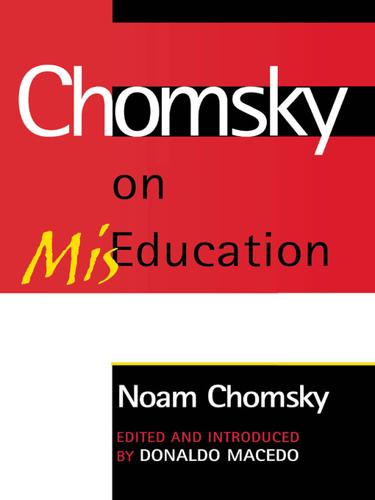
Chomsky on Mis-Education
by
Noam Chomsky
Published 24 Mar 2000
“There can be little doubt that, over the years, the United Nations has come to be dominated by what might be called a third-world ideology”—that is, by the views of the majority of its members—and that its attacks on the United States are “excessive and one-sided.” This judgment holds despite the annual U.N. condemnations of the Soviet Union in Afghanistan, the regular U.N. reports on its human rights violations there, and the Security Council vote condemning the Soviet downing of KAL 007 over Soviet territory. The downing by the U.S. Navy of an Iranian civilian plane over Iranian territorial waters with 290 lives lost elicited no such reaction, and the U.S. attack against South Vietnam, later all of Indochina, was neither condemned nor subjected to inquiry; in fact, Shirley Hazzard observes, “throughout these years, the war in Vietnam was never discussed in the United Nations.”51 Continuing his review of the decline of the United Nations, Bernstein observes that both the Security Council and the General Assembly condemned the U.S. invasion of Grenada, including most NATO countries and other U.S. allies.
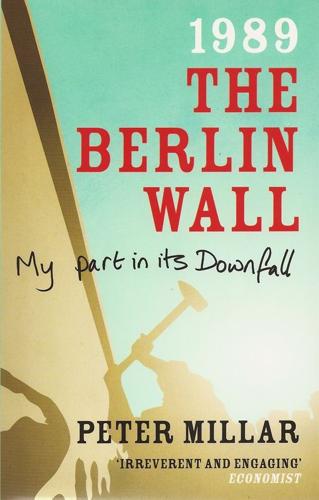
1989 The Berlin Wall: My Part in Its Downfall
by
Peter Millar
Published 1 Oct 2009
The ‘evil empire’, it seemed, was living up to its reputation. Soviet spokesmen were unrepentant, blaming the US for using civilians as ‘shields’ for its espionage activities. Conspiracy theories abounded, not least among journalists, given as a breed to black humour who noted the aircraft’s James Bond designation: KAL 007. In the meantime, our feeling of isolation, as ‘enemies in a strange land’ was intensified when the Soviet state airline Aeroflot was banned from landing in almost all Western countries who at the same time ordered their national airlines to suspend flights to the Soviet Union. Although there was still the option of the long drive or overnight train journey to Helsinki, there was a feeling among the foreign community of being trapped in the lion’s den.

Korea
by
Simon Winchester
Published 1 Jan 1988
And then the shutter snaps shut and the image, such as it was, halts its meagre progress. After 1953, the year I vaguely recalled as the date of the cease-fire between the two unhappily and perhaps permanently divided Koreas, there is no real image at all. A few names of people and places and events swim in and out of memory—Syngman Rhee, President Park, Koreagate, Kim II Sung, the KAL 007 disaster, Pyongyang, the Rangoon bombing, the green baize tabletop at the town of Panmunjom. But otherwise nothing. Just a distant memory of merciless and pointless fighting, a hazy knowledge of stunning economic miracles having been wrought in the subsequent years, and, pervading everything, a vague and haunting impression of a Korean face as somehow being a face that represents all that is mysterious, impassive, and vaguely frightening about the East.
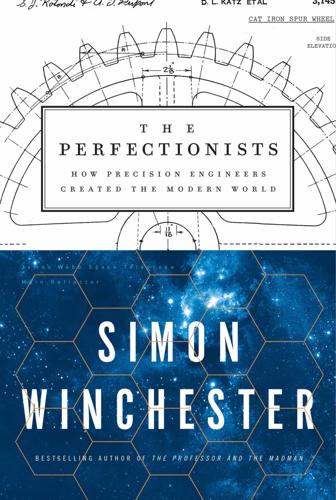
The Perfectionists: How Precision Engineers Created the Modern World
by
Simon Winchester
Published 7 May 2018
Initially it was top-secret, a component of the nuclear strategic arsenal designed to make certain that planes carrying atomic bombs and submarines armed with nuclear-tipped missiles always knew where they were to a high degree of accuracy, and that their weapons knew their targets’ locations to within margins of just a few meters. Then, in the aftermath of the shooting down in 1983 of Korean Air Lines Flight 007 by Soviet fighters after it accidentally strayed into forbidden airspace over Sakhalin Island while flying from Anchorage to Seoul, Ronald Reagan decided that civil users (airlines initially, and then ordinary civilians, too) should have equal access to the technology. To withhold deliberately a means of accurately determining one’s location was considered morally questionable, Reagan’s White House decided, even when ranged against the strategic advantage of keeping the information to oneself, as was claimed by the military.
…
accuracy: not of supreme importance in clocks, 104–5 precision vs., 13–16, 15 Rolls-Royce Camargue and, 134–35 Adams, John, 90, 95 Admiralty, British: Harrison’s sea watch and, 35 naval artillery and, 42 pulley block supply and, 68, 70, 72–73 agriculture, 102, 273 Westinghouse threshing engine and, 156–58 Whitney’s cotton gin and, 94, 96 Airbus A380 double-decker superjumbo jet, 205, 207 see also Quantas Flight 32 aircraft, 173–214 access to GPS and, 269–70 passenger and freight, in Jet Age, 198–99 with propeller-driving piston engines, 178, 180, 181–82, 189, 198 shooting down of Korean Air Lines Flight 007, 269 see also jet engines; Quantas Flight 32 Air Force, British, see Royal Air Force (RAF) Air Force, U.S., 85 GPS controlled by, 268, 269 Parkinson’s clock-based navigation system and, 267–68 Second Space Operations Squadron (2 SOPS), 271–72, 272 Air Ministry, British, Whittle’s design for jet engine and, 183, 185, 189–90 Albert, Prince, 109, 110–11, 112–13 almanacs, 350 American Journal of Science, 343 Amoco Petroleum, 256 Ångstrom, 344, 345 Antikythera mechanism, 24–27, 36 Antonioni, Michelangelo, 215 Apple Computer, 284n Aristotle, Nicomachean Ethics, 23 ASML (originally called Advanced Semiconductor Materials International), 291–97 cleanliness standards and, 293–94 extreme ultraviolet (EUV) radiation and, 296–97 founding of, 291–92 machines for making microprocessor chips made by, 275–76, 277, 277–78, 291–97, 304 mutual dependency of Intel and, 278 aspherical lenses, 220, 228 assembly line, 114 at Ford, 160–67 little skill needed by workers on, 165 pork butchery as inspiration for, 163–64 astrolabe, 37, 38 astronomy, 221 in ancient world, 26 Antikythera mechanism and, 24–27 Gascoigne’s measuring instrument for, 77 Herschel family’s achievements in, 229–30n medieval clocks and, 28 see also Hubble Space Telescope atomic bomb, 281 atomic clocks, 104, 266, 271–72, 313, 351–53 master clocks, 104, 352–53 Atomic Energy Commission (AEC), 264n atoms, measurement system using wavelength of light and, 342–45 Augustine, Saint, 348 Autocar, 148, 150 “automated battlefield” idea, 267n automation, necessitated by shrinkage of tolerances to none whatsoever, 206–7 automobiles, 129–71 crankshafts of, 6 made in France, 137–39 vehicle taxation and, 147–48 see also Ford Motor Company; Rolls-Royce Motors axles, assembled on a line, 165 Babylonians, 26, 331 Bacquancourt, M. de, 70 Ball Aerospace, 250 Bally computer-augmented pinball machines, 289 bamboo, Japanese handcrafted objects made of, 325, 326, 328 banknotes, printing sequential numbers on, 58 Bardeen, John, 281–82, 282 Barnack, Oskar, 220, 221, 227 bearings, 33 for jet engines, 187 beaver pelts, trade in, 94n beer engines, 58 Beidou, 270 Bélidor, Bernard Forest de, 87n Bell Labs, 281–82, 283, 287 Bentham, Jeremy, 68n Bentham, Sir Samuel, 68 Bersham foundry (Wales), Wilkinson’s cylinder-boring machine at, 41, 42–44, 49–51, 55 bicycles, 102, 161n bifocal lenses, 222–23 bimetallic strips, 33–34 binoculars, 222 biplanes, 181 BIPM (International Bureau of Weights and Measures), 338 Bladensburg, Battle of (1814), 81–85 Blanc, Honoré, 87, 89–94, 97, 98 Jefferson’s advocacy of system of, 90, 92–94 musket locks demonstrated by, 90–93, 96 standardized flintlock designed by, 89–90, 102 workshop of, sacked during French Revolution, 92 Blanchard, Thomas, 19n, 97, 98, 100–102 Block Mills (Portsmouth), 71–72, 73 blocks (maritime), see pulley blocks Blow-Up, 215 Board of Longitude, British, 30, 31, 32, 34, 35–36, 64, 105 Boeing, 269 bokeh (“quality of blur”), 224 Boulton and Watt steam engines, 46, 48, 71 Bragg reflectors, 296, 297 Bramah, Joseph, 53–60, 54, 276 “challenge lock” displayed in window of, 54–55, 112n, 124, 125–27 fantastically complicated lock designed and patented by, 57, 58 Maudslay hired by, 59, 60 Maudslay’s departure from employ of, 65 Maudslay’s lock-making devices and, 60–65 slide rest invention and, 64–65 supposedly unpickable Marshall lock picked by, 56–57 various contraptions invented by, 57–58 water closets built by, 55 Brattain, Walter, 281–82, 282 Brecht, Bertolt, Life of Galileo, 1 British Overseas Airways Corporation (BOAC), 196n British Standards Institution, 353 British Thomson-Houston (BTH), 185, 186, 187, 188, 189 Broadwell chips, 291 Brunel, Isambard Kingdom, 68n Brunel, Sir Marc, 68–71, 72 BSW (British Standard Whitworth), 123 Busicom, 288–89 cadmium, unit of length based on, 344, 345 calculators, Intel’s 4004 chip in, 288–89 camera obscura, Niépce’s first photographs taken with, 223–24, 225n cameras, 215 invention of, 223–24 Japanese, 308–9 owned by author, 219–20 tolerances for, 227–28 see also lenses; photographs Canberra bomber, 196n candela, definition of, 346, 347 cannon making, 39, 41–44 easily amenable to standardization, 87–88 French système Gribeauval for, 87 hollow-cast method for, 41–42 steam power and, 44 Wilkinson’s boring method for, 42–44, 87 Canon, 227, 308 Carlyle, Jane, 118 cars, see automobiles; Ford Motor Company; Rolls-Royce Motors Carter, George, 190, 191 Cassegrain reflector, in Hubble Space Telescope, 233 cesium clocks, 104, 352–53 Chaisson, Eric, 234, 251 Challenger, 231, 232, 234, 243n, 248n Chandra X-ray Observatory, 232n Charleville flintlock musket, 84, 95 China: apple tree outside metrology research center in, 354–55 Beidou navigation system of, 270 metric system and, 340n chromatic aberration, 224, 225 chronometer, 31, 37, 259n circle of confusion, lens design and, 224 Civil War, U.S., Whitworth rifle used in, 123–24 cleanliness standards (ISO numbers), 293–94 Clinton, Bill, 270 clock-difference navigation system: invention of, 265–68 naming of, 268 see also Global Positioning System (GPS) clocks, 103–6, 348 Antikythera mechanism and, 27, 28 astronomical information displayed by, 28 atomic, 104, 266, 271–72, 313, 351–53 balance mechanisms in, 33, 35, 311 cesium master, 104, 352–53 friction problem in, 32–33, 35 gearwheels for, 5–6 GPS, 272 inaccuracy in, 104–5 Japanese timekeeping traditions and, 310–11 long-case, 33 maritime, 29–37, 105 mechanical, invention of, 27–28 quartz, 315 see also timekeepers; watches coal, furnaces fired by, 40, 41 Cold War, 262 Cole, Henry “Old King,” 112–13n Colt, 102 coma (comet trail–like aberration), 224, 233, 235 combine harvesters, 102 compressors, turbine engines and, 180, 185, 186 Compton Gamma Ray Observatory, 232n computers, 276 analog, from Ancient Greece (Antikythera mechanism), 24–27, 36 personal, 287–88 see also integrated circuitry; microprocessor chips; transistors Concorde, 195 Connecticut Valley, 102–6 clock makers in, 103–6 gun makers in, 102 Cook, Captain James, 35, 248n, 250 Corning, glass disk for Hubble mirror made by, 237, 238 COSTAR (Corrective Optics Space Telescope Axial Replacement), 247, 248, 250, 251 Crocker’s idea for, 245–47 cotton gin, 94, 96 cotton-spinning machines, 116 Crack-Up, The (Fitzgerald), 307 craftsmanship, see handcrafting cranes, electrical, 136–37 crankshafts, 6 Cranwell (Royal Air Force College), Whittle as student at, 180–82 Crocker, Jim, 245, 245–47 Crystal Palace (Hyde Park, London), 112, 113–14 see also Great Exhibition of the Works of Industry of All Nations (London, 1851) cutting edge, both literal and figurative in mid-nineteenth century, 115–16 cylinders: at heart of LIGO’s measuring instrument, 305, 305–6 Wilkinson’s technique for boring in iron, 42–44, 49–52, 304–6 Darby, Abraham, III, 41 “dark side,” 85–86 jet engine makers working for, 198 Perkin-Elmer as player on, 236–37 day, defining, 334, 349, 350 Day and Newell, 125, 127 Decauville, 137, 138–39, 142, 145–46, 158 Decca radio navigation system, 256–59, 262, 264 decimal time, 349n De Dion quadricycle, 137, 158 Defense Department, U.S.: GPS and, 270–71, 271 intelligence-gathering satellites of, 271 Delambre, Jean-Baptiste, 335, 337 Deptford, HMS, 35 Dickens, Charles, 58 Discovery, 231–32, 233 dispersion, 225 Disraeli, Benjamin, Vivian Grey, 74n Doppler-based navigation systems, 259–65, 267 principle behind, 261–62 shortcomings of, 264–65 Sputnik’s radio signals and, 259–61 U.S.
…
Scott, The Crack-Up, 307 fixtures (devices that hold workpiece absolutely secure), 100n, 102 flatness: of surface plates, 75–76, 119–20 of Whitworth’s billiard table, 124–25 flintlocks, see muskets, flintlock flour-milling machinery, 102 f number of lens, 219n Ford, Henry, 129, 131, 155–67, 157, 276 altruistic motives of, 155–56 early years of, 156–58 first motor car experiments of, 158–59 gauge blocks, or Jo blocks, utilized by, 169–71 mass production assembly line created by, 160–67 Royce compared to, 131, 155–56, 158–59, 165–66 Westinghouse threshing engines in origin story of, 156–58 Ford Foundation, 166 Ford Model T (Tin Lizzie), 129, 155–56, 157, 160–67 decreases in price of, 165, 167 magneto assembly for, 164–65 production line for, 160–67 Ford Motor Company, 152, 155–67 complaints about SKF bearings at, 170 Edsel, 236 gauge blocks, or Jo blocks, introduced at, 169–71 incorporation of, 131, 159 interchangeable parts essential at, 161n, 166, 170 Model A, 159–60 Model T, see Ford Model T (Tin Lizzie) precision’s role at Rolls-Royce vs., 131, 166–67 production line at, 160–65 “For want of a nail . . .” proverb, 244 foundries, electronic, 278n fountain pens, 58 France: Anglo-French rivalry over inventions and, 87n automobiles made in, 137–39 British wars with, 39n, 66, 73 decimal time in, 349n postrevolutionary Republican Calendar in, 333–34 social implications of precision as concern in, 90, 92, 117 standards for length and mass created by, 334–40; see also metric system system of interchangeable parts developed in, 87–94, 97, 98, 102 Franklin, Benjamin, 90, 222–23 French Academy of Sciences, 335 French Revolution, 59, 66, 92 frequency: Doppler effect and, 260–61 units of measurement and, 347–48 friction problem, in early clocks, 32–33, 35 Gainsborough, Thomas, 38–39 Galileo, 222, 332, 348 Galileo global navigation system, 270 Gascoigne, William, 77 Gaudy Night, 105 gauge blocks, or Jo blocks, 167–71, 169 author’s introduction to, 2–4 Ford Motor Company and, 169–71 interchangeable parts and, 170 Johansson’s invention of, 167–68 gauges: go and no-go, for ensuring cannonball fit, 87 in gun manufacture, 89, 98–99, 100 gearwheels: from Ancient Greece (Antikythera mechanism), 24–27 producing, 4–5 uses for, 5–6 wooden, in Harrison’s clocks, 32–33 Gee, 259, 262 George III, King, 36, 74n George VI, King, 194–95 Germany, turbojet-powered aircraft developed by, 179, 184, 190–91, 195 Gernsback, Hugo, 181 glassblowers, scientific, 7 Glass Menagerie, The (Williams), 255 Global Positioning System (GPS), 37, 265–74 Doppler-based navigation system as precursor of, 259–65, 267 Easton’s invention of, 260, 265–68 ever-more-precise calculations of, 272–73 freed for civilian use, 269–70 major achievements of nineteenth-century cartography checked against data from, 273n military uses of, 269 other nations’ similar systems, 270 Parkinson’s vision for, 267–68, 268 run from tightly guarded Schriever Air Force Base, 270–72, 271, 272 time data for, 352–53 GLONASS, 270 Gloster Aircraft Company: experimental aircraft powered by jet engine (Gloster E28/29, or Pioneer), 190, 191–94 Gloster Meteor fighters, 192 Goddard Space Flight Center (Maryland), 234, 250–51, 294 Gould, Rupert, 34n graphene, 298 grasshopper escapement, 33 gravitational constant, 298 gravitational waves, detection of, 20–21, 300–306 see also LIGO (Laser Interferometer Gravitational-Wave Observatory) gravity: Bramah’s lock design and, 57 clock mechanisms and, 33, 354 link between time and, 354–55 pendulum swings and, 33, 333, 349 Whitworth’s measuring machine and, 121, 122 Great Britain: Anglo-French rivalry over inventions and, 87n divergent paths of industry in U.S. vs., 114–15 trading fortunes and, 31 War of 1812 and, 81–85 wars fought by, in eighteenth and early nineteenth centuries, 39, 66–71 Great Exhibition of the Works of Industry of All Nations (London, 1851), 111–27, 112 arrangement of exhibits at, 115–16 Bramah’s “challenge lock” picked at, 112n, 124, 125–27 Crystal Palace built for, 112, 113–14 extraordinary zeitgeist of the time and, 111–13 financing of, 113 great big iron machines displayed at, 114–16, 117–18 Hunt’s concern about social implications of machines displayed at, 116–17 origin of idea for, 112–13n Whitworth’s instruments and tools displayed at, 118–23 Great Trigonometric Survey of India, 273n Greece, Ancient: astronomers from, 26n gearwheels from (Antikythera mechanism), 24–27, 36 lost-wax method in, 204 measurement of time in, 27 Greenwich Royal Observatory, Harrison’s clocks at, 30–37 restoration of, 34n winding of, 30–31 Gribeauval, Jean-Baptiste Vaquette de, 87, 89, 92, 98 Guier, William, 259–62 Gulf War of 1991, 269 guns: Blanchard’s lathe for stocks of, 101–2 both precision and accuracy crucial in making of, 105 breech-loaded single-shot rifles, 97–98 French system of interchangeable parts applied to American precision-based manufacturing of, 97–100 Johansson’s invention of gauge blocks, or Jo blocks, and, 167–68 machines first used to make components of, 98, 99–100 rudiments of mass production assembly lines in manufacture of, 161n Victoria’s opening shot in 1860 Grand Rifle Match, 107–10 see also muskets, flintlock Hall, Bishop Joseph, Works, 331 Hall, John, 97–98, 99–100, 102 handcrafting: Antikythera mechanism and, 24–25, 27 Blanc’s standardization system and, 89–90, 92, 98 eliminated in Ford’s assembly line, 165, 166–67 Japanese appreciation for, 308, 309–10, 314, 316, 319–29 machine tools vs., 35, 38, 60, 72–73, 98–99 at Rolls-Royce, 6, 131, 152–55, 165, 166 social consequences of move away from, 72–75, 89–90, 116–17 and survival of craftsmanship in France, 92 in Whitney’s gun factory, 96–97 Hanford, Wash., cleanup site, 19–20 Harpers Ferry Armory (Va.), 98, 99, 102, 161n Harrison, John, 24, 30–37, 47, 67, 105, 267n balance mechanisms in clocks made by, 33, 35 Board of Longitude prize and, 30, 31, 32, 34, 35–36 large pendulum clocks made by (H1, H2, and H3), 30–31, 32–34, 35 restoration of clocks made by, 34n sea watches made by (H4 and K1), 31–32, 34–36 testing of clocks made by, 34, 35–36, 39 winding of clocks made by, 30–31, 33, 35 Harrison, William, 35–36 Hattori, K., and Company, 311–13 Hattori, Kintaro, 310–12 Heinkel Company, 184, 195 Heinkel He 178, 190–91 Heisenberg, Werner, 212–13, 298 Die Physik der Atomkerne, 275 Herbert, George, 244n Herschel family (William, Caroline, John, and Alexander), 229–30n Hiroshima, atomic bomb dropped on, 281 Hitler, Adolf, 187, 191 Hobbs, Alfred C., 124, 125–27 Hoerni, Jean Amédée, 284–85, 286n, 287 Hooker, Sir Stanley, 139 hour: defining, 28, 334, 349 displayed by mechanical clocks, 28–29 Hubble, Edwin, 2321 Hubble Space Telescope, 229–53, 230 cost of, 232 delays in launch date of, 243n first images from (First Light), 234–35, 251 flaw in main mirror of, 234, 234–43; see also Perkin-Elmer Corporation High Speed Photometer in, 247, 248, 250 money matters and, 237n news of failure announced to press, 235–36 placed into orbit, 230–32, 233 public reverence for, 229–30 repair of, 244–51 second images from (Second Light), 251–52 size and appearance of, 232–33 teacup affair and, 238 ultimate success of, 252–53 Wide Field and Planetary Camera in (Wiffpic), 247–48, 249 Hucknall Casings and Structures plant (Rolls-Royce), 209–10, 211, 229 Hunt, Robert, 116–17 hydraulic press, 57–58 India, Great Trigonometric Survey of, 273n Individual and the Universe, The (Lovell), 215 Industrial Revolution, 39, 41, 44, 51, 73, 74n, 111, 304 integrated circuitry, 286–99 devices made possible by, 287–88 Noyce’s work in genesis of, 286, 287, 288n printing with photolithographic machines, 277, 277–78, 286–87, 294 see also microprocessor chips; transisters Intel, 288–92 ASML machines bought by, 275–76, 277, 277–78 Chandler, Ariz., fabrication plant of (Fab 42), 275–76, 277–78, 291–92 first-ever commercially available microprocessor made by (Intel 4004), 288–89, 290, 292 founding of, 288 mutual dependency of ASML and, 278 interchangeable parts, 63, 71, 105, 114, 276, 312 in Ford’s mass production assembly lines, 161n, 166, 170 for guns, 84–85, 86, 87–100 system of, developed in France, 87–94, 97, 98, 102 interferometers: classic, 300 laser, 242–43 LIGO (Laser Interferometer Gravitational-Wave Observatory), 20–21, 299–306, 303, 305 null connector as, 240–41 internal combustion engine, 158 aircraft powered by, 178–213; see also jet engines International Astronomical Union, 344 International Committee on Weights and Measures (1960), 345–46 International Metre Commission (1872), 338 International Prototype Kilogram (IPK), 339 International Prototype Meter (IPM), 339 International System of Units (SI), 16–17n, 346 iron, 38, 39 cannon making and, 39, 41–44 Japanese handcrafted objects made of, 309–10 lathes made of, rather than wood, 61, 64 machines to manufacture pulley blocks made of, 71 smelting and forging, 40–41, 43, 49 steam engines made of, 46, 48–52 Wilkinson’s cylinder-boring technique for, 42–44, 49–52, 304–6 Iron Bridge of Coalbrookdale, 41 Ito, Tsutomi, 321–22 Jacula Prudentum, 244n James Webb Space Telescope, 231n, 294, 295, 299 Janety, Marc Étienne, 336, 337 Japan, 308–29 bamboo objects handcrafted in, 325, 326 fondness for handcrafting in, 308, 309–10, 314, 316, 319–29 Great Tohoku Earthquake and Tsunami in (2011), 322, 323–25 Living National Treasures of, 325–26 rigorous appreciation of perfect in, 308–9, 314 timekeeping traditions in, 310–11 urushi (handmade lacquerware) of, 326–28, 327 Westernization in, 310, 311 see also Seiko Japanese Railways, 313–14 Jay, John, 92–93 Jefferson, Thomas, 52 Blanc’s flintlock system and, 90, 92–94, 96 Whitney’s contract and demonstration and, 95, 96 Jet Age, inauguration of, 193 jet engines, 173–213 alloys for blades in, 200, 201, 203 Americans’ initial lack of interest in, 179 bird strikes and, 203n British public told of, 194 complexity within, 196–97 experimental aircraft fitted with, 190, 191–94 financial backing for development of, 184–85, 189 first passenger and freight aircraft with, 198–99 French forerunner of, 179 German development of, 179, 184, 190–91, 195 hot environment in, 187, 199–201 invention of, 178–94, 179; see also Whittle, Frank keeping blades cool inside, 197–98, 198, 199–203, 204, 206 manufacturing process for single-crystal blades in, 203–6 no tolerance whatsoever in making of, 206–7 power of piston engine vs., 182–83 propulsive jet of air produced by, 182, 187 Quantas Flight 32 and failure of, 174–78, 178, 196, 207–12, 208, 229 revolutionary novelty of idea for, 186 Rolls-Royce, 196–213, 205; see also Rolls-Royce jet engines single moving part in, 180 stress of takeoff and landing cycles on, 210 testing of prototypes, 187–90 turbine blade efficiency and, 198 Whittle’s eureka moment and, 182–83 Whittle’s patent and, 183–84 Jet Propulsion Laboratory, or JPL (Pasadena), 247–48, 350 Jo blocks, see gauge blocks, or Jo blocks Johansson, Carl Edvard, 3, 167–71 bought out by Ford, 170–71 gauge blocks, or Jo blocks, created by, 167–68 Johns Hopkins University: Applied Physics Laboratory (APL) at, 259–62 Space Telescope Science Institute at, 234, 251 Johnson, Claude “CJ,” 148–50, 151 Jones, Alexander, 27 Kai Tak Airport (Hong Kong), 195–96 kelvin, definition of, 346 Kiev, author photographed with Rolls-Royce outside city gates of, 133–34 Kilby, Jack, 288n kilogram, 336–40, 346–47 cast in platinum as étalon (standard), 337, 339–40, 348 now defined in terms of speed of light, 348 relationship of meter to, 336–37 see also metric system Kilogram of the Archives, 336 Klein bottle, 7n Kodak, 237n Korean Air Lines Flight 007, shooting down of, 269 krypton, standard unit of length based on, 344–45 Kyoto, temples of, 308 landscape photography, lenses for, 226 lasers, 351 in LIGO’s measuring instrument, 301, 305, 305–6 in manufacture of microprocessor chips, 293–94, 296 presumed to be precise, 242 lathes, 61–65 for gun stocks, designed by Blanchard, 101–2 invention and evolution of, 61 iron vs. wood, 61, 64 Maudslay’s improvements to, 61–65 screw-making, 63–64 for shoe lasts, designed by Blanchard, 19n, 101 slide rest and, 62–63, 64–65 latitude, determining, 30n leadscrews: of bench micrometers, 77–78 of lathes, 61, 62–63 Leica, 221, 222, 227–28 cameras owned by author, 219–20 lenses made by, 220, 224–25, 227–28 Leitz, Ernst, 222, 227 Leland, Henry, 168 length, standard unit of, 334–40 cast in platinum as étalon (standard), 336, 337, 339–40 mass in relation to, 336–37 meridian of Earth and, 334–36, 337 now defined in terms of time, 348 pendulum swing and, 332–33 redefined as wavelength of light, 342–45 Wilkins’s proposal for, 332–33 see also metric system Lenin, V.

Gorbachev: His Life and Times
by
William Taubman
Despite everything he had been doing to improve relations, the United States couldn’t seem to exist without portraying the Soviet Union as the enemy. “What kind of society is it that requires such distortions?” Shultz couldn’t resist citing Afghanistan and the shooting down of the Korean airliner to explain U.S. “skepticism” about the USSR. “How much did the U.S. pay for the death benefit of the pilot who flew KAL 007?” Gorbachev shot back, implying he was an American spy. “I will not dignify that comment with a response,” Shultz snapped. But, determined to fight back whenever Gorbachev attacked, he accused Moscow of spreading rumors that the United States had invented AIDS. Gorbachev subsided, but refused to set a date for the Washington summit.
…
Gorbachev), 664 Ilyushin-62 airliners, 401, 614 India, 273, 420, 688 “individual labor activity,” 244–45 inflation, 217, 312, 313, 450, 527, 530, 546, 569, 575, 655 “information age,” 281, 282, 395–96, 401, 405, 413 INF Treaty (1987), 396–401, 403, 411, 412, 415, 420 Inozemtsev, Nikolai, 254 Institute for World Economy and International Relations, 186, 254 Institute of the Economy of the World Socialist System, 481 Institute of Marxism-Leninism, 317–18 Institute of Railroad Transportation, 41 “Intelligentsia and Perestroika, The,” 659 intercontinental ballistic missiles (ICBMs), 393, 396 intermediate-range nuclear forces (INF), 295, 393–401, 403, 411, 412, 415, 420, 468, 560, 598, 686 International Foundation for Socio-Economic and Political Studies, see Gorbachev Foundation (Gorbachev Fond) International Monetary Fund (IMF), 565, 591, 595, 597, 631 Interregional Deputies Group, 444, 445, 450, 451, 452, 456, 536–37 In the Trenches of Stalingrad (Nekrasov), 28 Ipatovsky district, 131–33 Iran, 271, 304–5, 376, 394 Iran-contra scandal, 304–5, 394 Iraq, 274, 502, 525, 540, 541, 566–68, 589, 596, 685, 692 Iraq War, 525, 540, 541, 566–68, 596, 692 Ireland, 390 Irkutsk (town), 12, 434, 566, 661 “Iron Curtain,” 419 Islam, 170, 242, 271, 274, 368, 377, 403 Israel, 398, 568, 631 Italian Communist Party, 149, 195–96 Italy, 117, 127, 128, 149–50, 157, 195–96, 242, 264, 269, 277, 387, 390, 396, 454, 459, 460, 470, 489, 495, 549, 568, 648, 666, 671, 677 Ivashko, Vladimir, xviii, 515–16, 520, 532, 532, 612, 613 Izmailovo Park, 325 Izvestiia, 345, 346, 350, 389, 671 Jackson, Michael, 416 Jackson-Vanik Amendment, 496, 757n–58n Jakeŝ, Miloŝ, xviii, 381 Japan, 172, 346, 413, 466, 525, 570, 596, 649, 650, 656 Jaruzelski, Wojciech, xviii, 267, 268, 386, 386, 477, 481–82 Jefferson, Thomas, 66 Jesus Christ, 331, 416, 655 Jews, 4, 45, 47, 52, 72, 141, 249, 251, 343, 572 John, Elton, 682 John Paul II, Pope, 495, 549, 685 Johns Hopkins University, 458–60 Joint Chiefs of Staff (JCS), U.S., 408 Jospin, Lionel, 671 Juan Carlos, King of Spain, 571, 632 Kabul government, 376, 377 Kádár, János, xix, 143, 268, 270, 381 Kaganovich, Lazar, xix, 98, 190 Kaifu, Toshiki, 570, 594, 656 Kaiser, Robert, 422 KAL 007 shootdown (1983), 190, 398 Kalinovsky, Artemy, 273 Kalyagin, Viktor, xix, 103, 131, 134, 152 Kant, Immanuel, 66, 86 Kapital, Das (Marx), 80 Kapitonov, Ivan, 121 Kaplan, Rick, 643 Kaputikyan, Silva, 368 Karagezian, Karen, 668–69, 671 Karagodina, Yulia, xix, 32, 34–39, 126 Karelia province, 141, 361–62 Karmal, Babrak, xix, 272, 273 Karpinsky, Len, 91–92 Karyakin, Yuri, 441 Katayev, Vitaly, 254 Katyn Forest massacre (1940), 640, 641 Kauls, Albert, 511 Kautsky, Karl, 215 Kazakhstan, 175, 206, 221, 229, 237, 309, 366–67, 394, 525, 533, 582, 598, 608, 613, 628, 629, 637, 662, 671 Kazannik, Aleksei, 444 Kaznacheyev, Viktor, xix, 103–5, 134, 135, 137, 138, 148, 162 Kechekyan (professor), 117 Kendall, Donald, 405 Kennebunkport, Me., 495, 555, 613 Kennedy, Edward M., 504 Kennedy, John F., 470 Kennedy School of Government (Harvard University), 590, 656, 682 KGB, 74, 119, 120, 121, 123, 138, 140, 140, 142, 144, 165, 170, 171, 173, 179, 187, 192, 205, 210, 221, 227, 245, 246, 250, 251, 254, 256, 271, 274, 282, 290, 294–97, 317, 328, 331, 336, 344, 348, 349, 361, 367, 372, 376, 398, 400, 407, 408, 434, 442, 461, 470, 511, 512, 526, 532, 542, 566, 567, 572, 576, 578, 582, 584, 598–600, 607–9, 619, 621, 623, 630, 640, 763n Khan Girei, 670 Khasbulatov, Ruslan, xix, 528, 649 Khodorkovsky, Mikhail, 679 Khrushchev, Nikita, xix, 19, 58, 90–92, 96–98, 100, 107–9, 111, 112, 121, 126–28, 143–45, 149, 150, 166, 183, 184, 190, 192, 197, 216, 217, 231, 232, 236, 246, 247, 254, 259, 263, 266, 306, 318, 332, 339, 356, 366, 454, 470, 476, 487, 580, 603, 651, 691, 744n Kiev, 27, 47, 48, 108, 226, 240–41, 340, 438, 494, 558, 598, 623, 625, 685, 692–93 Kievan Russia, 47 Kiev Cave Monastery, 340 King’s Row, 288 Kinnock, Neil, 201 Kirghiz Republic, 355 Kirilenko, Andrei, xix, 121, 137, 161, 167, 176, 176, 322 Kirov, Sergei, 249, 250 Kislovodsk (city), 130, 138, 160, 172 Kissinger, Henry, xix, 294–95, 396, 405, 414, 466, 467, 470, 471, 490, 559 Klimov, Elem, 248 Knight, Amy, 617 Kochemasov, Vyacheslav, xix, 488, 752n Koestler, Arthur, 339 Kohl, Hannelore, 389 Kohl, Helmut, xix, 277, 387–92, 389, 420, 464, 465, 470, 476–78, 488, 490–94, 498, 544–47, 549, 554, 564, 565, 569–71, 590, 591, 594, 644, 657, 658, 682 Kolbin, Gennady, xix, 367 Kolchanov, Rudolf, xix, 44, 48, 50, 51, 53, 65, 66 Koldunov, Aleksandr, 397 Kolesnikov, Aleksandr, 328 kolkhoz (collective farm), 12–14, 21, 23, 57, 74, 110, 113, 695 kommunalki (communal apartments), 89 Kommunist (journal), 195, 319 kompromat (compromising material), 42, 47 Komsomol (Young Communist League), 8, 13, 15, 28, 29, 36, 37, 42, 46, 67, 73, 77–79, 79, 89, 90, 93–103, 106, 107, 112, 117, 124, 130, 132, 135, 136, 138, 141, 156, 259, 429, 446, 451, 517, 536, 695–96 Komsomol Central Committee, 100–101 Komsomolskaya pravda, 534 Koppel, Ted, 642, 643, 644–45 Korea, 190, 267, 395, 398, 556, 563 Kornienko, Georgy, xix, 205, 207, 220, 257–59, 272, 287, 292, 544 Korobeinikov, Anatoly, xix, 135 Korolyov, Sergei, 339 Korotich, Vitaly, 359, 454 Korzhakov, Aleksandr, 323, 639 Kosygin, Aleksei, xix, 92, 116, 123, 133, 137, 145–47, 145, 174, 175, 216, 217, 653, 689 Kovalev, Anatoly, xix, 144, 197, 254, 259, 572, 752n Kozmodemianskaya, Zoya, 21 Kozyrev, Andrei, 593 Krasnodar (town), 10, 39, 160, 180, 514 Krasnye kamni sanatorium, 138–39, 146 Kravchenko, Leonid, xix, 214, 229 Kravchuk, Antonina, 606–7 Kravchuk, Leonid, xix, 606–7, 613, 625, 629, 630, 634 Kremlin, 1, 4, 43, 45, 50, 80, 90, 92, 93, 98, 108, 121, 124, 126, 137, 139, 141, 142, 146, 147, 149, 158–75, 181, 184, 190, 193, 196, 197, 201, 205–8, 217, 222, 226, 231, 233, 238–44, 249, 253, 255, 261, 269, 275, 276, 278, 282, 306, 310, 313, 315, 317, 321, 322–26, 330, 333, 337, 343, 346, 347, 350, 359, 364, 366, 370, 383, 390, 393, 394, 398, 399, 412–17, 428, 433, 434, 437, 440–41, 450, 457, 466, 470, 471, 473, 487, 488, 502, 506, 509, 511, 518, 521, 522, 525, 526, 538, 545, 548, 552, 563, 577, 578, 585, 593, 596, 597, 598, 600, 600, 613, 623, 625, 634–39, 639, 642–43, 645–51, 666–82, 684, 690, 691, 693 Krenz, Egon, xix, 462, 484–87, 752n Kriuchkov, Vladimir, xix, 227, 296, 336, 372, 376, 377, 408, 470, 511, 526, 531, 532, 534, 536, 542, 543, 567, 572, 576, 577, 582, 584, 585, 599–601, 600, 608, 612–14, 617, 619, 621, 640, 659 Kruchina, Nikolai, 621 Kuban region, 23, 130–33 Kuchmaev, Boris, 100 Kulakov, Fyodor, xix, 105–10, 115, 121–23, 129, 131, 132, 135, 138, 159, 161, 165, 174, 689, 710n kulaks, 12–14, 64, 105, 320, 696 Kunayev, Dinmukhamed, xix, 206, 221, 309, 366, 367 Kursk, Battle of, 27 Kursk (city), 27, 43, 659 Kuwait, 525, 540, 541, 566, 567, 596, 692 Kuznetsov, Aleksei, 145 Kvitsinsky, Yuli, xix, 491, 563 Kyrgyzstan, 628 Lake Baikal, 566 Lance missiles, 474 Land of the Firebird, The, (Massie), 283 Lanina, Olga, xix, 605 Laptev, Ivan, xx, 345, 346 Latsis, Otto, xx, 168 Latvia, 310, 435, 441, 452, 511, 522, 575, 577, 579 Lauder, Estée, 421 “law on enterprises,” 313–14, 352 Laxalt, Paul, 275 Lebed, Aleksandr, 661, 663 Lefortovo Prison, 397 Lenin, V.
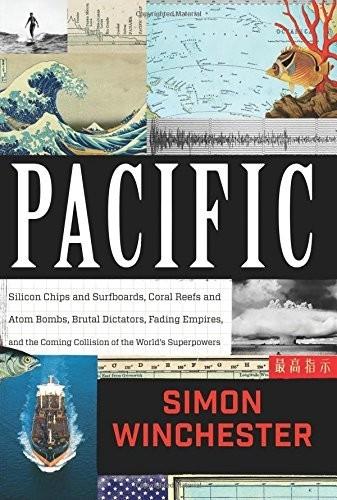
Pacific: Silicon Chips and Surfboards, Coral Reefs and Atom Bombs, Brutal Dictators, Fading Empires, and the Coming Collision of the World's Superpowers
by
Simon Winchester
Published 27 Oct 2015
Dordrecht: Kluwer Publishers, 1992. Inada, Lawson Fusao. Only What We Could Carry: The Japanese American Internment Experience. Berkeley: Heyday, 2000. Izzard, Brian. Sabotage: The Mafia, Mao, and the Death of the Queen Elizabeth. Gloucester, UK: Amberley, 2012. Johnson, R. W. Shootdown: The Verdict on KAL 007. London: Chatto and Windus, 1986. Kaplan, Robert D. Asia’s Cauldron: The South China Sea and the End of a Stable Pacific. New York: Random House, 2014. Kashima, Tatsuden. Foreword. Personal Justice Denied: Report of the Commission on Wartime Relocation and Internment of Civilians. Seattle: University of Washington Press, 1982.
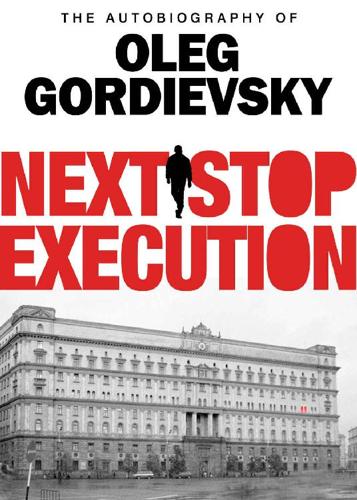
Next Stop Execution: The Autobiography of Oleg Gordievsky
by
Oleg Gordievsky
Published 13 Apr 2015
What they failed to realize was that in Britain no payments are made for blood donations. Frantic efforts were made to discredit President Reagan, and frequent telegrams from Moscow repeated that his administration was actively preparing for war. In the autumn East—West tension rose to a dangerous pitch after the shooting down of a Korean airliner, KAL 007, over the Sea of Japan on 1 September. Within a few days it became obvious to the world that the Soviet fighter pilot, who fired two missiles and then announced on his radio, ‘The target is destroyed,’ had made a terrible mistake, but the Kremlin and the KGB made all-out efforts to demonstrate that ‘the intrusion of the plane into Soviet airspace’ had been ‘a deliberate, thoroughly planned intelligence operation’, directed from ‘certain centres in the territory of the United States and Japan’.

Oil: Money, Politics, and Power in the 21st Century
by
Tom Bower
Published 1 Jan 2009
In 1992, Marathon Oil signed an initial agreement with government officials in Moscow to exploit the oil and gas on a territory known as Sakhalin 2, a frozen island in the Pacific Ocean, 6,472 miles and seven time zones from Moscow. In the tsarist era, criminals were sent into exile on Sakhalin, and in 1983 MiG fighters flew from the island to shoot down KAL 007, a Korean passenger plane. Across that bleak 28,000-square-mile shelf in the Sea of Okhotsk, oil production was possible only during the summer. Between October and June, storms, strong currents and seven-foot-thick ice packs prevented work. Oil had been produced onshore since 1923. In 1975, assured by the Russian government that there were between 28 and 36 billion barrels of oil under the sea, a Japanese company drilled some wells, but lacking expertise and money, its quest was soon terminated.

Recoding America: Why Government Is Failing in the Digital Age and How We Can Do Better
by
Jennifer Pahlka
Published 12 Jun 2023
In the 1970s, the Department of Defense decided that a robust, stable navigation system was critical to national defense, and it eventually developed a constellation of satellites that could establish one’s location within six feet. GPS provided dramatically greater coverage and accuracy than radio or radar navigation, but it was supposed to be available only to the military. In 1983, however, the crew of Korean Air Lines Flight 007, flying from New York City to Seoul via Anchorage, Alaska, made an error in their navigational calculations and accidentally strayed into the prohibited airspace of the USSR. Mistaking the airliner for a spy plane, the Soviets shot it down, killing all 269 people aboard, including Larry McDonald, a US congressman from Georgia.
…
See also Clinger Cohen Act Infrastructure Investment and Jobs Act (2021) inspector generals integration environment and testing Internal Revenue Service (IRS) automatic tax preparation and child tax-credit and stimulus checks and CIO and COVID and data sharing and health care providers tax ID numbers and IMF system and modernization and tax code changes and tax form complications and uncollected taxes and internet National Broadband Plan and as public good UDP and Internet Explorer Intuit Turbo Tax Iowa UI program Iraq War Italy Japan Jones, Richard judicialization Justice Department (DOJ) Kates, Natalie “Kevin” (VA employee) Klein, Ezra Kodak Korean Air Lines Flight 007 Koskinen, John Kramer, Larry Kundra, Vivek Labor Department (DOL) latency problem, defining away Latimer, Jazmyn lawsuits legacy systems. See also archaeological layers legal aid clinics legalistic thinking legislation comically misnamed laws and considering tech implementations when writing promise vs. reality of Lewis, Michael liberals Liddell, Chris life expectancy load testing local governments federal grant applications and login.gov option Loosemore, Tom Lotus 1–2–3 low-income families EITC and number of interactions with government services and Luna 9 moon landing MacArthur genius grant machine learning macros mailing address mainframes mandates, removing “Manifesto for Agile Software Development” marijuana legalization Martorana, Clare Massachusetts UI programs Maude, Francis McChrystal, Stanley McDonald, Larry means-tested programs media Medicaid Medicare.
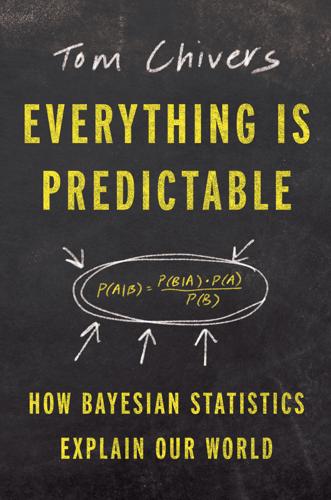
Everything Is Predictable: How Bayesian Statistics Explain Our World
by
Tom Chivers
Published 6 May 2024
He was replaced by Konstantin Chernenko—“an enfeebled geriatric so zombie-like as to be beyond assessing intelligence reports,” according to one historian22—who was widely expected to die soon too. Ronald Reagan’s presidential administration was struggling to build relationships, and it was widely expected that another Soviet hard-liner would follow Chernenko. The tension was so high that awful mistakes were made. In September, a South Korean airliner, Korean Air Lines flight 007, strayed into Soviet airspace. Moscow dispatched fighters to intercept it and mistakenly shot it down; among the 268 dead was an American congressman. And then the world came awfully close to nuclear war. Each autumn, NATO would carry out a war game called Able Archer, preparing Western forces for the buildup to and the event of an all-out nuclear attack.
…
T., 83*, 175–176, 179–181, 185–187, 212, 258 Jefferson, Thomas, 71 Jeffreys, Harold, 83*, 104–106, 113, 122, 155, 163, 181 “José Bernardo,” 112 Journal of the Plague Year, A (Defoe), 23 judgment, testing, 251–256 K Kahneman, Daniel, 119–120, 227–230, 249 “Kalimba,” 121, 123 Kalman filter, 286, 315 Kant, Immanuel, 271–272 Kardashian, Kim, 277 kayfabe, 115 Kendall, Maurice, 114 Keverberg, Baron de, 78 Keynes, John Maynard, 92 Kitson, Jonathon, 258–259, 264 Kolmogorov complexity, 205 Korean Air Lines Flight 007, 249 Koucký, Michal, 205, 206 Kozyrkov, Cassie, 159, 168 Kudlow, Larry, 255 L Lagrange, Joseph-Louis, 35 Lakens, Daniël, 115–116, 130–131, 133–137, 145, 155–156, 158, 162, 165, 167–169, 331 Laplace, Pierre-Simon, 70, 77–78, 81, 90 large language models (LLMs), 221–225 law, 17–20 DNA evidence, 10, 18–19 prosecutor’s fallacy, 17–18 law of large numbers, 46–53 Lee, Stephanie, 126 Let’s Make a Deal (television program), 242–247 Li, Kenneth, 224 Liebenberg, Louis, 236 life expectancy, 77–78 “Like a Bayesian,” 112 likelihood, 152–153 likelihood function, 258, 261 likelihood ratio, 91, 183, 187 Lindley, Dennis, 105, 109, 110, 114, 122, 128, 147, 155, 189, 212, 300 Lindley paradox, 155–159, 172 line of least squares, 217–218 Litvinenko, Alexander, 260 Lives of the Professors of Gresham College, The (Ward), 27 LLMs (large language models), 221–225 logic, 21, 175–181 Aristotelian, 175–181, 186–187, 267 Boolean, 175–181, 186–187 propositional, 233–234 logical syllogisms, 175–181 logic gates, 177–179 London School of Economics (LSE), 115, 144, 232 Lovers, The (film), 265 low-precision predictions, 292–294 LSE, see London School of Economics luck, skill vs., 332–333 M machine learning, 113, 215 Madsen, Jens Koed, 115, 144, 162–164, 232, 234–237, 240, 241 mammograms, 7–9, 16 Manheim, David, 182, 258 Mantel, Hilary, 24 Many Labs studies, 137 Mary, Queen, 24 maximum likelihood estimation (MLE), 90–91, 289 McConway, Kevin, 83*, 157–158 McGurk effect, 289 McMurdo Dry Valleys, Antarctica, 190 means, 57–59 measurement error, 63–64 medical testing, 11–17 breast cancer screening, 7–9, 16 colon cancer screening, 16 COVID-19 testing, 11–13 determining odds for, 230–232 determining prior in, 10 false testing rates, 4–5 non-invasive prenatal testing, 16–17 prostate cancer screening, 14–16 Meehl, Paul, 148–149 meta-analyses, 137, 165–166 Microsoft, 221 Mill, John Stuart, 95 minimum message length, 205–209 Misak, Cheryl, 107 MLE (maximum likelihood estimation), 90–91, 289 models, usefulness of, 326–327 Morgenstern, Oskar, 199, 200, 201 motor babbling, 318–319 Mr.
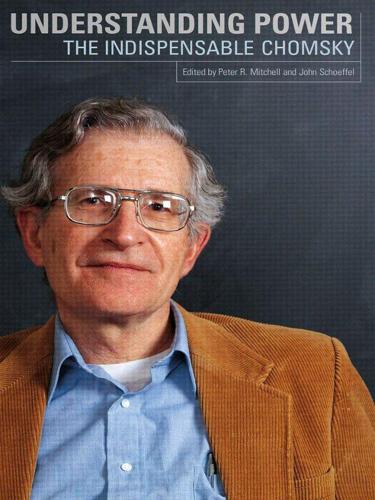
Understanding Power
by
Noam Chomsky
Published 26 Jul 2010
So the main point is not total suppression of information by the media—that’s rare, although it certainly exists. The main point is the shaping of history, the selection, the interpretation that takes place. I mean, just to give one illustration, I doubt that any story ever received the kind of fanatical level of coverage as the downing of Korean Air Lines Flight 007 by the Russians in 1983—that was presented as sure proof that the Russians were the worst barbarians since Attila the Hun, and that we therefore had to install missiles in Germany, and step up the war against Nicaragua, and so on. Well, for the month of September 1983 alone, the New York Times index—you know, the very densely printed index of articles that have appeared in the Times—has seven full pages devoted to this story.
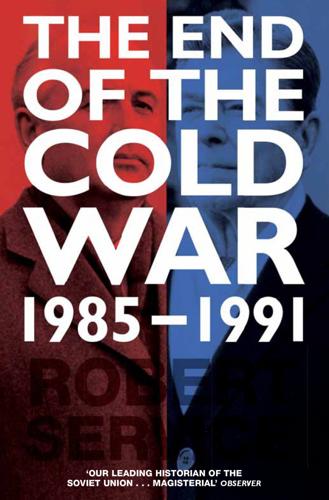
The End of the Cold War: 1985-1991
by
Robert Service
Published 7 Oct 2015
Crawford, Economic Vulnerability in International Relations: East–West Trade, Investment, and Finance (New York: Columbia University Press, 1993) W. Crowe, In The Line of Fire: From Washington to the Gulf, the Politics and Battles of the New Military (New York: Simon and Schuster, 1993) B. Crozier, Free Agent: The Unseen War, 1941–1991 (London: HarperCollins, 1993) A. Dallin, Black Box: KAL 007 and the Superpowers (Berkeley: University of California Press, 1985) K. Dawisha, Eastern Europe, Gorbachev and Reform: The Great Challenge, 2nd edn (Cambridge: Cambridge University Press, 1990) M. K. Deaver, Behind the Scenes (New York: William Morrow, 1987) M. K. Deaver, A Different Drummer: My Thirty Years with Ronald Reagan (New York: HarperCollins, 2001) D.
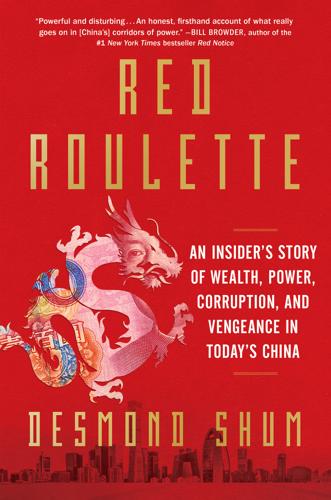
Red Roulette: An Insider's Story of Wealth, Power, Corruption, and Vengeance in Today's China
by
Desmond Shum
Published 6 Sep 2021
Aspiring to a position in politics? One participant I met at Aspen was an eye surgeon who spent half the year volunteering in developing countries. Another told a story about an American named John Oldham who’d graduated from Columbia Law School in 1983. Tragically, John perished in the downing by Soviet fighters of Korean Air Lines flight 007 in September of that year. Oldham had been on his way to Beijing for a year at Peking University’s faculty of law to teach and study. Following his death, his friends and family took up donations and created a scholarship in his name that each year brings a Chinese legal scholar to the United States and sends an American counterpart to China.
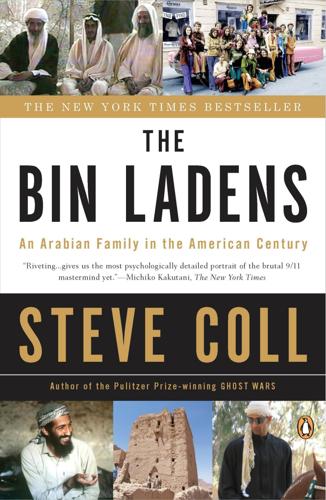
The Bin Ladens: An Arabian Family in the American Century
by
Steve Coll
Published 29 Mar 2009
Apart from the court filings and statements by White, there are additional fragments of evidence about Salem’s possible connections to conservative American political circles that were active in covert anti-communist operations during the 1980s. For example, according to flight logs, Larry McDonald, the Georgia congressman and president of the John Birch Society, flew on one of Salem’s private jets in Saudi Arabia just months before McDonald died aboard Korean Air Lines Flight 007, which was shot down on September 1, 1983, after it strayed into Soviet airspace. Jim Bath’s connections to the Bush family and other leading figures in the Reagan-era Republican Party in Texas have continued to raise questions about the extent of Salem’s relations with these politicians.
…
Khalis, Younus Khamis Mushayt Khan, Anwar Khartoum; Al Qaeda in; CIA in; LeVine’s visit to; missions to Khashoggi, Adnan Khashoggi, Jamal; on Afghan war; Muslim Brotherhood and; on Osama’s fear of secularization; on Peshawar; on Salem-Osama relationship; Sudan visits of Khatib, Walid Al- Khattab, Omar Bin Al- Kherchtou, L’Hossaine Khost province Kilo; Bin Laden compound at Kilo King Abdulaziz Air Base King Abdulaziz University; Hajj Research Center in King Abdullah Economic City; Kissinger, Henry Kitty Hawk Field of Dreams; Kitzbühel Koran; inheritance and; instruction in; Judgment Day in; memorizing of; multiple marriages and Korean Air Lines Flight 007 Kulsum, Umm Kuwait; Iraq’s invasion of Lackland Air Force Base Ladin International Company Lahore Lake, Anthony Lansdowne Limited; Las Vegas, NV Latakia Lawrence, T. E. (Lawrence of Arabia) Lebanon, Lebanese; civil war in; education in; Israeli invasion of (1982); U.S. hostages in lend-lease aid LeVine, Steve Lewis, Mary Ellen Liberia Libya Lion’s Den Logan, Sam Logan International Airport London; Abdullah-Edwardes meeting in; Bakr’s driver in; Bin Laden office in; Osama in; Osama’s considering of move to; Osama’s office in; “Painting and Patronage” in; power surge in; Salem in; Saudi exiles in; stock market in; terrorism in Long March Rockets Lormel, Dennis Los Angeles, CA; Ibrahim’s mansion in; Khalil in; Najiah in; Salem in; Yeslam in Los Angeles County Superior Court Los Angeles International Airport Los Angeles Police Department; Love, Ben Love, Mark McBride, Robert McCarthy, Miller McCartney, Paul McDonald, Larry MacDonald, Marianne McDonald’s McFarlane, Robert McKim, Steven McManus, John C.
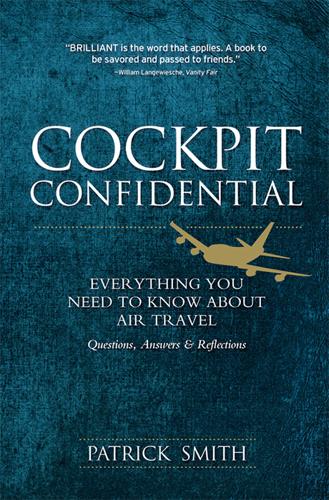
Cockpit Confidential: Everything You Need to Know About Air Travel: Questions, Answers, and Reflections
by
Patrick Smith
Published 6 May 2013
Almost every high-profile airplane crash is trailed by a conspiracy theory of one sort or another. Could you clear up lingering doubts and suspicions concerning a few of these? Where to start? Conspirobabble stretches back to the death of Dag Hammarskjöld and the heyday of the Bermuda Triangle. The modern era got going with the 1983 shoot-down of Korean Air Lines flight 007 by a Soviet fighter. Since then, the Internet has become a potent incubator of myth and misinformation, spreading pseudo-truths with the lackadaisical tap of a Send button. Five minutes with a keyboard and mouse, and you’re privy to more feverish speculation than the old Grassy Knollers ever could have dreamed of.

Little Failure: A Memoir
by
Gary Shteyngart
Published 7 Jan 2014
to ask me who I was, undoubtedly I would have answered with my slightly manicured but still thick Russian accent, Doctor, I am Gary Gnu the Third, ruler of the Holy Gnuish Empire, author of the Holy Gnorah and commander of the Mighty Gnuish Imperial Army. How do things come to such a pass? In 1982, I decide that I can no longer be me. The name “Gary” is a fig leaf, and what I really am is a fucking Red Gerbil, a Commie. A year later the Soviets will shoot down Korean Air Lines flight 007, and the topical New York pop-radio station 95.5 WPLJ will play a parody of the hit song “Eye of the Tiger” by the important American rock band Survivor, only instead of “Eye of the Tiger” the song will be renamed “The Russians Are Liars.” (“As those Communist killers / try to sleep late at night …”) And as awful as those lyrics are, I can’t stop singing them.

Army of None: Autonomous Weapons and the Future of War
by
Paul Scharre
Published 23 Apr 2018
You can use your device’s search function to locate particular terms in the text. Introduction: The Power Over Life and Death 1 shot down a commercial airliner: Thom Patterson, “The downing of Flight 007: 30 years later, a Cold War tragedy still seems surreal,” CNN.com, August 31, 2013, http://www.cnn.com/2013/08/31/us/kal-fight-007-anniversary/index.html. 1 Stanislav Petrov: David Hoffman, “ ‘I Had a Funny Feeling in My Gut,’ ” Washington Post, February 10, 1999, http://www.washingtonpost.com/wp-srv/inatl/longterm/coldwar/shatter021099b.htm. 1 red backlit screen: Pavel Aksenov, “Stanislav Petrov: The Man Who May Have Saved the World,” BBC.com, September 26, 2013, http://www.bbc.com/news/world-europe-24280831. 2 five altogether: Ibid. 2 Petrov had a funny feeling: Hoffman, “I Had a Funny Feeling in My Gut.’” 2 Petrov put the odds: Aksenov, “Stanislav Petrov: The Man Who May Have Saved the World.” 5 Sixteen nations already have armed drones: The United States, United Kingdom, Israel, China, Nigeria, Iran, Iraq, Jordan, Egypt, United Arab Emirates, Saudi Arabia, Kazakhstan, Turkmenistan, Pakistan, Myanmar, Turkey.
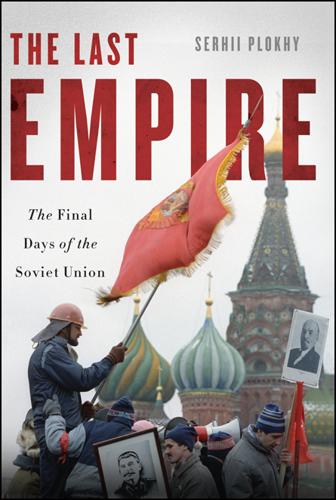
The Last Empire: The Final Days of the Soviet Union
by
Serhii Plokhy
Published 12 May 2014
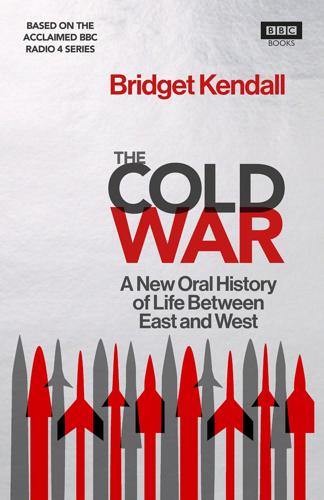
The Cold War: Stories From the Big Freeze
by
Bridget Kendall
Published 14 May 2017
‘A threat to our mutual humanity’ The Nuclear Arms Race and CND (1981–7) ON 1 SEPTEMBER 1983 a South Korean civilian airliner on its way from the United States to Seoul was shot out of the sky and plummeted into the Sea of Japan, killing all 269 passengers and crew on board, including 22 children. The plane, Korean Air Lines Flight 007, had mistakenly veered off course into Soviet airspace and failed to respond to warning signals. The Soviet Air Defence Command classified it as a military target, probably an intruding American spy plane, and gave the orders to fire air-to-air missiles to bring it down. It was a moment of dangerous, tragic drama at a point when tensions between Moscow and Washington were already climbing to new heights.

Europe: A History
by
Norman Davies
Published 1 Jan 1996
Air defence had been the burning military issue of the decade: it was the issue behind Cruise, and behind Star Wars itself, and it was costing multi-billions. Each side was terrified that the missiles and bombers of the other would find their target without response. The Soviet Union had attracted enormous opprobrium for building an unauthorized anti-IBM radar station at Krasnoyarsk, and for shooting down a South Korean passenger flight, KAL 007, which had strayed into Soviet air space. Yet all the expert anxieties of the world’s military planners were cut down to size by the prank of a German schoolboy. On 28 May 1987,19-year-old Matthias Rust piloted a tiny private monoplane up the Baltic from Hamburg, crossed the Soviet frontier in Latvia, flew at treetop level under the most concentrated air defences in the world, and landed on the cobblestones near Moscow’s Red Square.